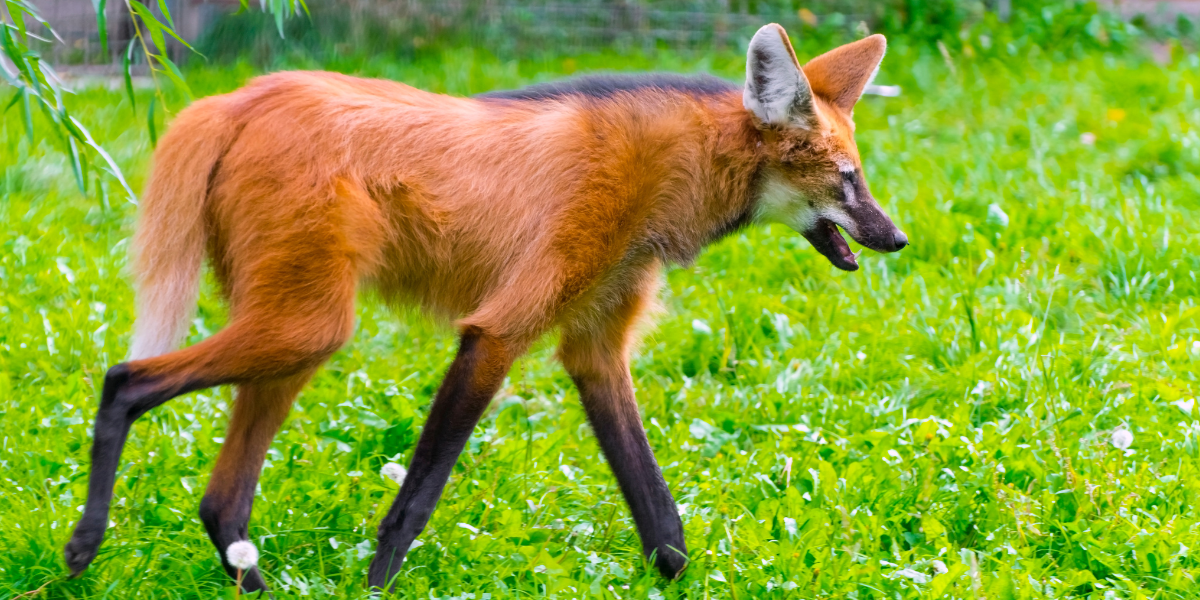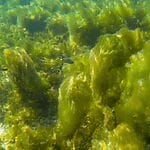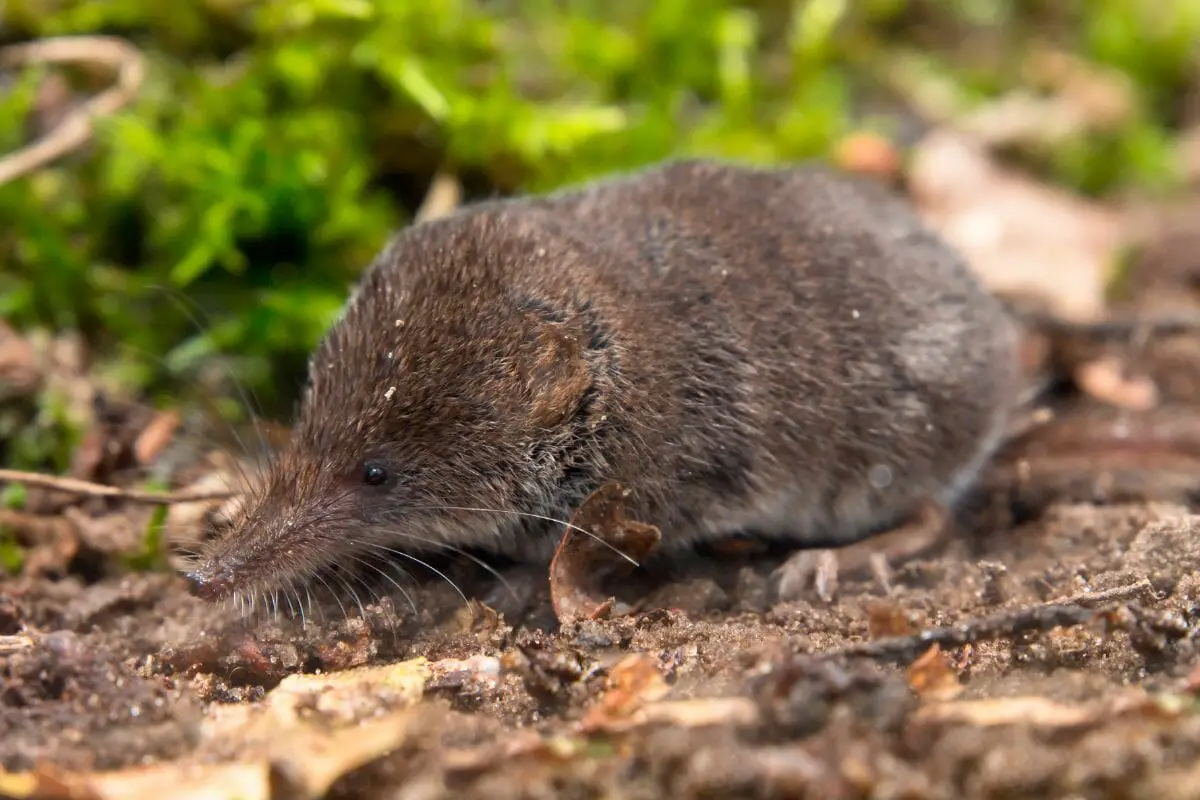Are Maned Wolf Endangered Species? – (Characteristics, Facts & Pictures)
Figuring out if the maned wolf is marked as extinct or not?
Presently IUNC listed maned wolves as near-threatened species. This means that the maned wolf species’ population is declining and need conservation efforts.
With its unique appearance and behavior, the Maned Wolf is an iconic animal found in the grasslands and savannas of South America. The scientific name of this wolf species is Chrysocyon brachyurus.

But what is the conservation status of this fascinating wolf species? Sadly, the maned wolf is currently marked as a “near threatened” species by the International Union for Conservation of Nature (IUCN).
This species faces the threat of extinction due to its habitat loss due to agricultural expansion, hunting, and new developments.
Many maned wolves are killed on roads, and there is a further threat from domestic dogs, which chase them and may also pass on disease. Let’s explore more about this species and what brought this species nearer to extinction.
Wild Maned Wolves & Captive Maned Wolves
The maned wolf is a unique species of the Canid family that have interesting characteristics and facts. But there are some differences between the wolves living in the wild and those captivated in zoos. Some of them are given below.
Maned Wolf Size & lifespan
The Maned Wolf is an intriguing animal that is known for its unique appearance. It is a slender canid that stands around 3 feet tall at the shoulder and weighs between 50-70 pounds.
One of the most striking features of the Maned Wolf is its long, slender legs, adapted for running through the tall grasses of savannas in its native South America.
These animals have a lifespan of around 12-15 years in the wild, although some have been known to live up to 20 years.
On the other hand, the captive maned wolves live for at least 7 years and a maximum of 12 to 15 years.
Maned Wolf Appearance
Maned wolf has a striking appearance that includes reddish-brown fur and a mane of long, black-tipped hair that runs from the back of its head down to the shoulders, which adds more beauty to its look.
With this, these maned wolves have large, erect ears, which is their defining characteristic, which also helps the maned-wolves to detect prey and predators from afar.
Maned Wolf Diet
The Maned Wolf’s diet is different compared to other Canidae family members. The Maned Wolf is primarily a herbivore, as 50% of its diet depends on fruits.
The fruits are essential to the Maned Wolf’s diet and provide all the nutrients they don’t get through the beef.
The Maned Wolves also prey on animals like birds, reptiles, and fish. Interestingly, the Maned Wolf has been known to use its unique hunting techniques to capture prey, such as jumping high into the air to catch birds.
Moreover, an interesting fact about the captive maned wolves is that the zookeepers keep a strict track and balance on their zoo diets.
As if these wolves consume heavy meat diets, they get infected with kidney diseases which eventually result in kidney stones.
Maned Wolf Reproduction & Breeding Season
The Breeding season of maned wolves usually occurs from May to July, during which the males and females usually roam long distances to find their mates.
Once they have found a mate, the pair will remain together for the entire breeding season. After a gestation period of around 60-70 days, the female gives birth to a litter of 2-6 pups.
Interesting facts about a Maned Wolf

The Maned Wolf is among the tallest Wild Canid.
The Maned Wolf is one of the most unique and fascinating members of the Canid family. Standing up to three feet tall at the shoulder, it is the tallest of all wild canids.
Unlike other predators, such as wolves and foxes, the Maned Wolf’s unique long legs allow it to see over the tall grasses of its native South American habitat.
But why did the Maned Wolf evolve to be so tall? It is found that it has developed its height in response to the tall grasses that dominate its habitat.
Does Maned Wolf howl?
As a member of the Canidae family, the Maned Wolf is often associated with the classic image of a wolf howling at the moon. However, despite its name and physical resemblance with the wolves, the Maned Wolf has a distinct vocalization that sets it apart from other canids.
Instead of a howl, the Maned Wolf emits a deep, booming bark that can be heard over long distances. This unique vocalization is used to communicate with other members of its species and to mark its territory.
Its other vocalizations, including whines, growls, and grunts, convey different messages. While the Maned Wolf may not howl like a traditional wolf.
How does a wild-maned wolf feed their pups?
Wild Maned wolves feed their pups differently as compared to other predators. Their pups are born blind and helpless and rely on their mother’s milk for the first few weeks.
But as the pups grow, the male-maned wolves start regurgitating partially-digested food, which pups can ingest easily without choking. Moreover, even in a zoological setting, male maned wolves have been observed regurgitating food for their young ones.
How Habitat Fragmentation is Destroying Maned-Wolf Genetics
Habitat fragmentation is one of the greatest threats to Maned Wolves. But what is Habitat fragmentation?
When large areas of natural habitat are broken up into smaller, isolated fragments due to human activities such as agriculture and urbanization.
As a result, the once contiguous habitat of the Maned Wolf has become patchy and fragmented, leading to a decline in genetic diversity.
This loss of genetic diversity can make the population more vulnerable to diseases and environmental stressors, which can lead to a decrease in the overall health of the species.
Therefore, reducing habitat fragmentation and preserving the natural connectivity of the Maned Wolf’s habitat is crucial to protect maned wolves.
Most of what we know of wild maned wolves comes from their poop
Scientists have discovered that one of the most effective ways to study this species of wolf identification of their poop.
By collecting and analyzing maned wolf scat, researchers can gain valuable insights into their diet, health, and even their social behavior.
For instance, the presence of certain plant fibers and seeds in their poop can reveal what types of vegetation they consume, while the amount and quality of their feces can indicate their overall health.
Therefore, by studying maned wolf poop, researchers can understand more details of the maned wolves and their role in ecosystems.
Conclusion
The Maned-wolf is currently classified as a near-threatened species by the International Union for Conservation of Nature (IUCN). While they are not currently considered endangered species, however, their populations have been declining due to habitat loss, hunting, and road accidents.
It is crucial that conservation efforts are made to protect these unique and beautiful animals before they count as endangered species.
The implementation of habitat conservation and management plans, as well as education and outreach programs, can help raise awareness about the importance of preserving the Maned-wolf species.
Conclusion
The Maned-wolf is currently classified as a near-threatened species by the International Union for Conservation of Nature (IUCN). While they are not currently considered endangered species, however, their populations have been declining due to habitat loss, hunting, and road accidents.
It is crucial that conservation efforts are made to protect these unique and beautiful animals before they count as endangered species.
The implementation of habitat conservation and management plans, as well as education and outreach programs, can help raise awareness about the importance of preserving the Maned-wolf species.
Frequently Asked Questions
How is a maned wolf different from a regular wolf?
These wolves have a fox-like appearance with long legs, which makes them different from regular wolves.
How many maned wolves are left?
In the wild, the remaining maned wolves that left are around 23,600 and are counted as threatened species.
Is the maned wolf an Autotroph or Heterotroph?
All maned wolves are heterotrophic as they hunt and ingest their food on their own.
What makes wolves different from other animals?
Wolves are complex, highly intelligent animals who are caring and playful compared to other animals.
- 15 Most Common Animals Living In Ponds - 2024-04-23
- What are the Characteristics Of a Wolf – (Characteristics & Interesting Facts) - 2024-04-23
- Animals That Live In The Abyssal Zone - 2024-04-22








